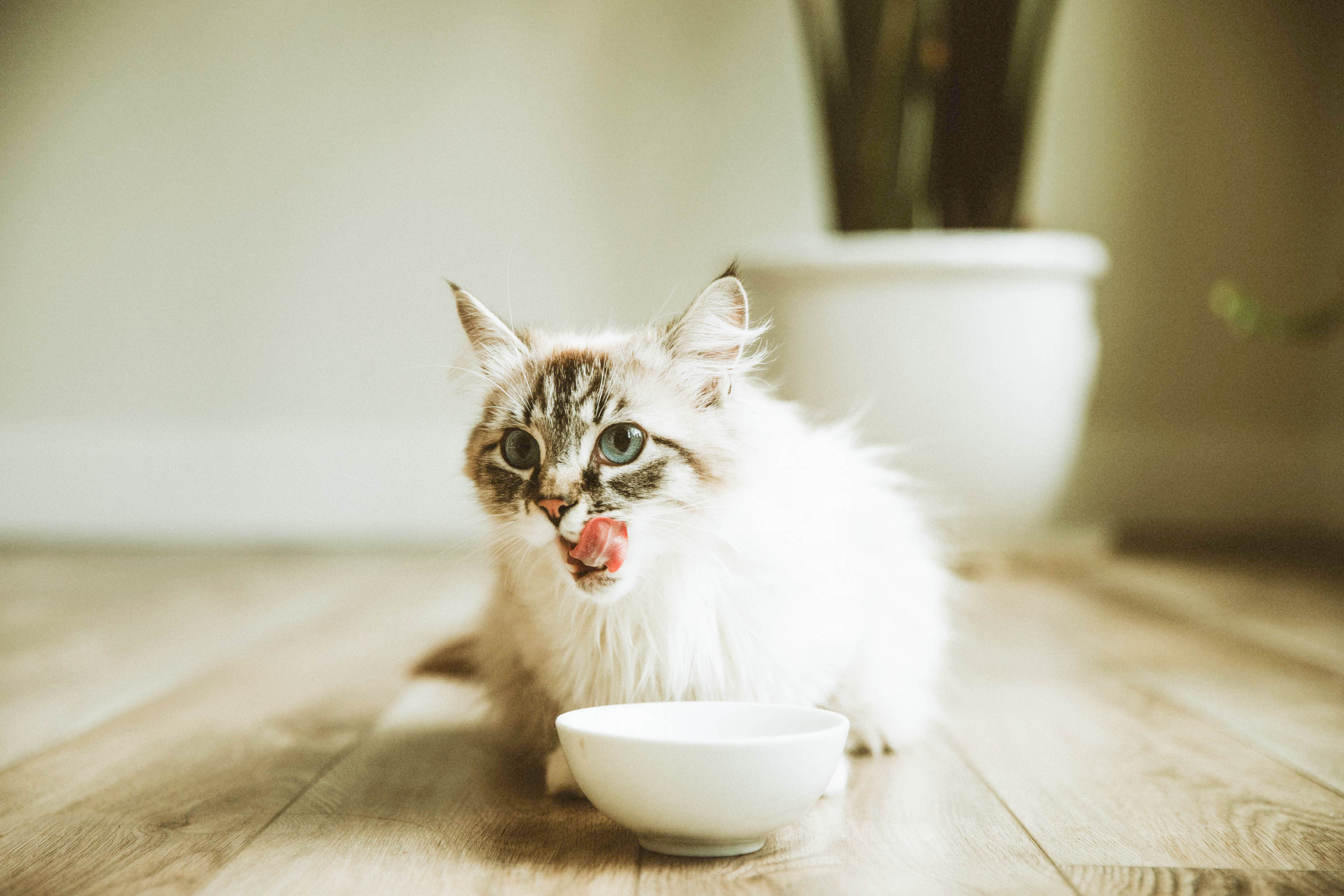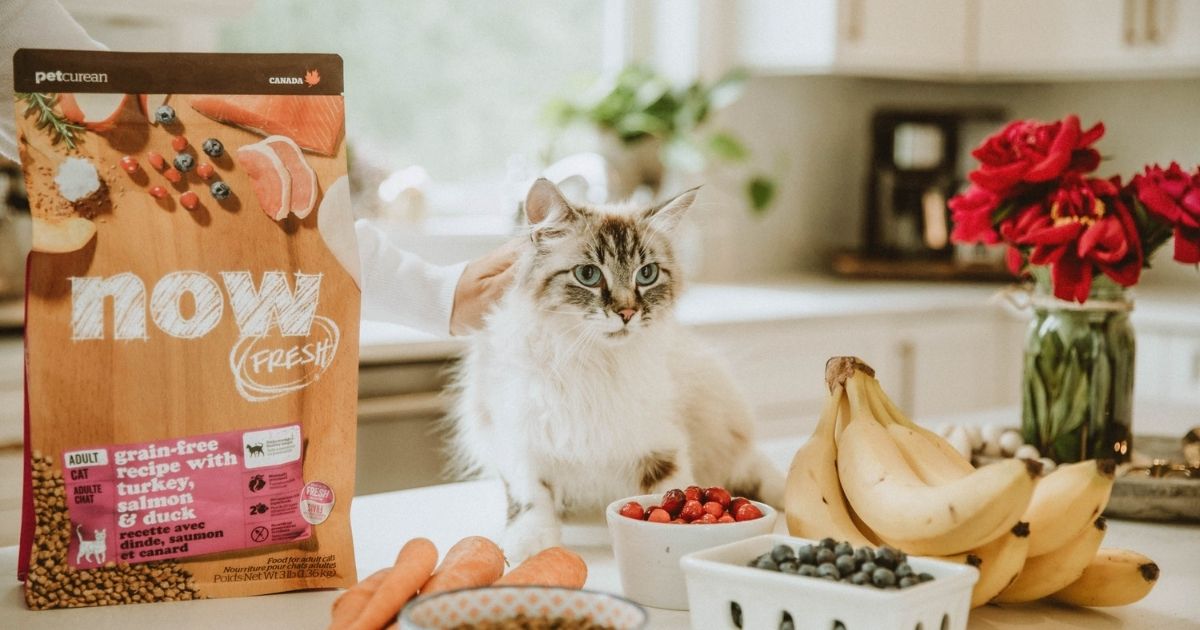This is a featured guest article from Now Fresh. Their idea is simple - pets deserve food that is made with the same love, care, and thoughtfulness as we put into preparing meals for the human members of our families.
Author: the NOW FRESH Team.
Being a cat parent is incredibly rewarding. Although some may find them aloof or hard to approach, experienced cat owners know they can be some of the most loveable and affectionate companions you can find. And for all the unconditional love you provide, they’ll return it in spades — if even in their own unique ways.
Due to physiological differences, cats require different nutrients to be given in their diet compared to dogs. It’s up to you, their loving pet parent, to make sure they are getting the proper nutrition from the food they eat. If for any reason you’re unsure about what nutrients to look for in cat food, no problem! We’ve compiled a list of some of the most key nutrients your cat needs in their diet.
Vitamins
Vitamins are naturally occurring compounds that help regulate bodily function and maintain overall health. When it comes to your cat, three of the most important ones you’ll want to make sure they get in their diet are Vitamin A, Vitamin D, and Niacin.
Vitamin A helps your cat maintain their vision and immune function, while also promoting growth and development. Vitamin D meanwhile is a necessary nutrient for healthy bones in cats. Unlike humans, cats’ bodies can’t synthesize either of these nutrients, so they must absorb them through the food they eat. Luckily, Vitamins A and D are plentiful in common cat kibble ingredients like whole eggs and salmon.
Niacin is a vitamin that helps cats’ fur and skin stay healthy, strengthens their nervous system, and is essential for energy metabolism. Unlike Vitamins A and D, which get stored in the fatty tissue of animals, niacin is a water-soluble vitamin that passes from the body through urination. For cats, Niacin also differs from those other vitamins in that their bodies can actually produce it from the amino acid Tryptophan. You may recognize tryptophan as a common amino acid found in poultry, such as chicken and turkey, that can make you feel sleepy. Fish is another great source of Tryptophan in cat diets (source).

Amino Acids
Speaking of amino acids, they also happen to be a key nutrient for your feline companion. Certain ones are produced in cats (known as non-essential amino acids) while others are not (i.e., essential amino acids). Cats do however have unique dietary needs for two particular amino acids: Arginine and Taurine.
Like Tryptophan, both Arginine and Taurine can be found in poultry meats and other animal proteins, as well as dairy sources. Arginine has an important function in your cats’ body, helping them avoid unhealthy levels of ammonia in their bloodstream. Taurine aids in the production of digestive fluids (such as bile), promotes healthy blood flow and eyesight, and is especially important for growth in kittens (source).
Unlike in dogs, taurine is considered an essential nutrient for cats, so many cat foods come pre-supplemented with Taurine, and it is also available as a supplement on its own or in other sources of animal protein.
Fatty acids
Fats are an essential part of any cat’s diet, and fatty acids are their building blocks. There are two types of essential fatty acids cats need from their diet, Omega-3 and Omega-6. Most fats tend to be higher in Omega-6, but you’ll want to ensure your companion receives a balance of both to help them fight inflammation, among the other health benefits these fatty acids provide.
Omega-3 fatty acids play a number of roles in the body but are notably important for a healthy coat and skin. Choosing a cat food with ingredients like flaxseed and salmon will help you ensure their diet has the level of Omega-3s they need.
Omega-6 fatty acids also play an important role in your cat’s skin health. In particular, you’ll want to give your companion a dietary source of arachidonic acid (or ARA), especially during early adulthood, when becoming pregnant and nursing kittens. Chicken fat and canola oil are rich sources of Omega-6 fatty acids, including ARA.
As much as we love them, we know cats can be finicky creatures, and the task of getting these necessary nutrients into your companion’s diet might make your head spin. Luckily, most of them can already be found in ingredients we know cats love! For example, NOW FRESH Kibble for Kittens, Adult and Senior Cats have recipes with fresh turkey, salmon or duck, or if your cat prefers wet food there’s also the chicken pate and minced chicken Recipes with Bone Broth.
To make your job easier and ensure your cat gets the nutrition they need, look for recipes with the correct nutrients. And by buying recipes from trusted brands, where recipes are created by nutritional experts, you can focus your attention on cuddles and playtime with your furry friend. For more information on cat nutrition, visit the Now Fresh blog, Good Read for Cats.
For more advice on feeding your pet, you can follow NOW FRESH on Facebook and Instagram, or sign up for their newsletter.
Want to give Now Fresh a try? Purchase food from Chewy.com!
This is a featured guest article from NOW FRESH. Their idea is simple - pets deserve food that is made with the same love, care, and thoughtfulness as we put into preparing meals for the human members of our families.
Author: The NOW FRESH Team




